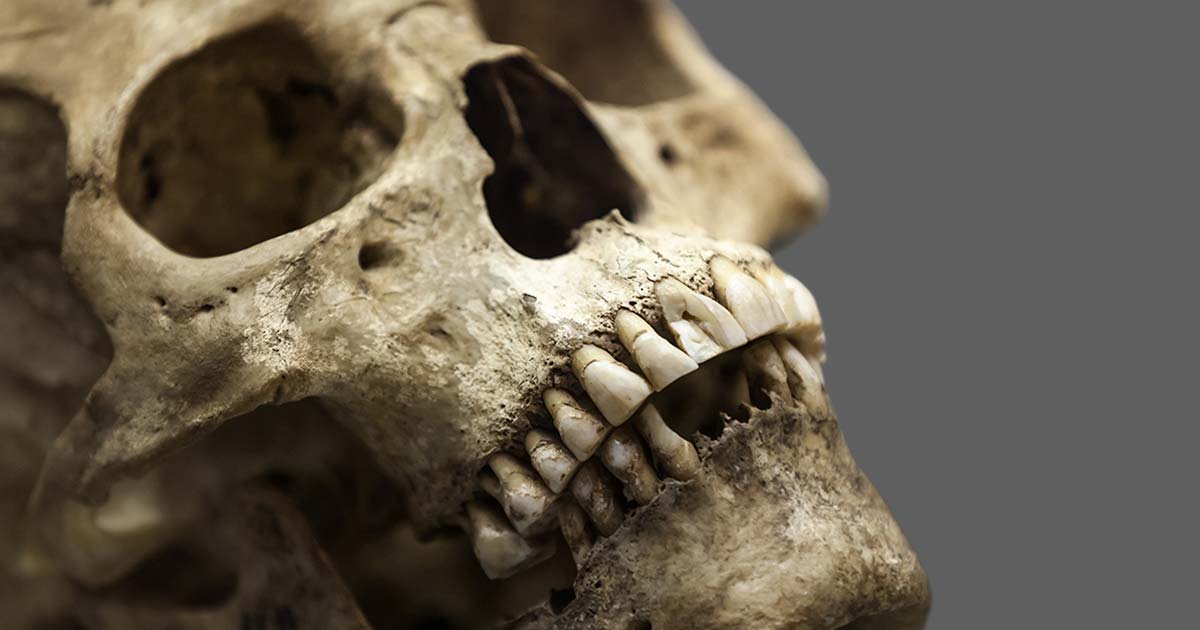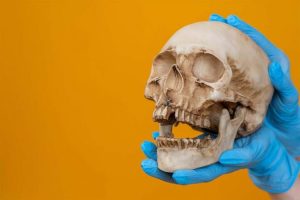Ancient Teeth Analysis Indicates a Single Native American Migration from Asia

The analysis of human teeth recovered during archaeological excavations has remained a standard means of investigating ancient migration patterns for the last five decades. In fact, this tried-and-true methodology has produced some important new results that shed light on the Native American migration from Asia to the Americas at least 16,000 years ago.
According to newly published research appearing in the American Journal of Biological Anthropology, those ancestors left eastern Asia in one gigantic mass movement of people. This Native American migration created a genetic (and dental) unity between different Native American groups that is a reflection of their common roots in that single mass migration.
Dental Anthropology Unlocks Secrets of Native American Migration
Amazingly, dental anthropologists have been able to discover many details about human migration from studying variations in the shapes of human teeth. The teeth in question often originate from individuals who lived in a bygone era, their sole legacy now confined to skeletal remnants left behind to be analyzed by scientists.
Study of Ancient Teeth Reveals Native American Origins Lie in Siberia
Historical Timeline Shook: Human Arrival in South America Pushed Back to 25,000 Years Ago
But dental anthropologists also study the teeth of modern humans, which helps them determine how teeth have evolved over the course of thousands of years. In the course of their work, these professionals make comparisons between modern and ancient teeth in order to detect ancestral connections between the old teeth and the new (and naturally between the people who possessed those teeth).
For the purposes of this latest analysis, an international team of dental anthropologists from Europe and the United States obtained access to a web-based application/database known as rASUDAS, which allows researchers to identify the ancestry of an unidentified person based on their tooth crown and root traits.
While this forensic application can be used to identify commonalities between the teeth of ancient and modern individuals, and therefore identify ancestry of the modern person, in this case it was used to identify the ancestry of prehistoric people whose teeth had been recovered from archaeological sites in different regions of the world.

Native American migration map. (R. Scott et. al / American Journal of Biological Anthropology)
Dental Clues Help Unravell Native American Migration
In total, the rASUDAS system was used to analyze teeth recovered from 1,418 ancient individuals whose skeletal remains had been collected from seven Earth bioregions: the American Arctic, North and South America, East Asia, Southeast Asia and Polynesia, Australo-Melanesia, Western Eurasia and Sub-Saharan Africa. The idea was to look for variations between expected ancestry based on geographical location and actual ancestry, which could allow the researchers to make some fresh discoveries about ancient migration patterns (or to confirm or contradict existing ideas about such matters).
The most significant findings of the analysis involved the ancestry of individuals whose skeletons were found in North and South America. Regardless of what particular group or people they belonged to, these Native Americans showed a similar degree of dental affinity to East Asia, being classified as East Asians by the rASUDAS2 system between 10 and 15 percent of the time.
This consistency suggests that Native Americans can all trace their ancestry to one population that split off from its East Asian ancestors at the same time, during a mass migration event. Other evidence has linked this split to a migration that took place 16,000 years ago or perhaps a few thousand years earlier, when the ancestors of Native Americans apparently left Asia and settled on the Bering Strait land bridge known as Beringia, which connected Siberia and Alaska during the last Ice Age, when sea levels were lower.
The current theory is that these people occupied the land bridge for between 5,000 and 10,000 years, until they migrated further south and began to spread out over North and South America. Such movement was presumably spurred first by population growth and later by the rise in sea levels that began to flood Beringia as the last Ice Age was winding down.
Interestingly, the rASUDAS2 database also found dental commonalities between the peoples of the Arctic and many ancient Native Americans. But this affinity declined in significance the farther south the Native Americans lived. This suggests that Arctic migrations to the Americas occurred to some degree, but only after the Native Americans had already left Beringia for the Americas. The Arctic migrants would therefore have been mixing with populations that lived exclusively in the northern section of the Americas, limiting the spread of their DNA and associated dental characteristics.
But the most important revelation of the new study is that Native Americans came into being as the result of a single, large-scale migration event that took place a few thousand years before the end of the last Ice Age and the disappearance of the Bering Strait land bridge (Beringia was flooded and became uninhabitable between 11,000 and 13,000 years ago).

Dental anthropology is helping researchers piece together the evolution of Native American migration. (Grispb / Adobe Stock)
Tracing the Evolution of Human Teeth Far Back into the Annals of Time
The team of researchers responsible for the new study was led by Richard Scott, a dental anthropologist from the University of Nevada, and Leslea Hlusko, a member of the Dental Anthropology Group at Spain’s Centro Nacional de Investigación sobre la Evolución Humana (CENIEH). Hlusko is the leader of the European project Tied2Teeth, which is promoting dental anthropology as a method for studying human evolution and migration.
Breakthrough in Peopling of the Americas Finds a Female Lineage from China
First Americans May Have Arrived by Sea Ice Highway as Early as 24,000 Years Ago
One of the ultimate goals of the Tied2Teeth project is to create an extensive dental variation database covering all stages of human history. This would empower an even deeper analysis of ancestral connections between ancient and modern peoples, and between ancient peoples living in different time periods.
According to Hlusko, the new research and its revelations about migrations into the Americas represents a sample of what such a database could accomplish. “Our study shows the power of analyzing dental variation at the level of the individual, and is just a preview of what is to come,” Hlusko proclaimed in a CENIEH press release.
Teeth are ideal for this type of study, since they are hard and durable and likely to last longer than most skeletal remains. In fact, human teeth have been found that date to 1.8 million years ago, which shows that dental anthropological analysis could be used to dig far back into human history.